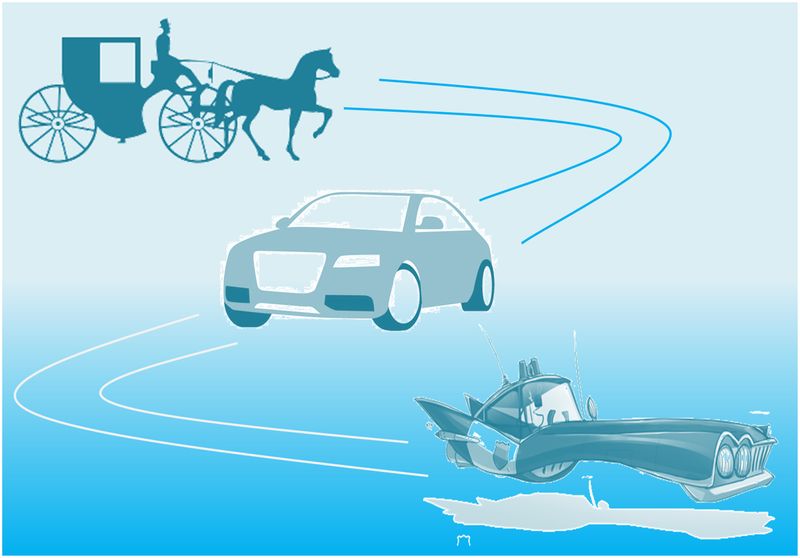Digitization and digitalization are accelerating in the asset management industry in response to new growth strategies, differentiation strategies and margin compression. At DiligenceVault, more than three quarters of our engagements are with B2B buyers who do not have significant investment in this space, but are looking to change that. Our learning experiences from the past year have prompted this sequel to How Do Firms Innovate?
But First – Innovation Resistance
An idea is a starting point, but it needs to be combined with execution, capital and clients, and also overcome points of friction. In researching innovation behavior, we came across the term “innovation resistance”, and this model.
Innovation resistance manifests itself in the forms of postponement, opposition or outright rejection. The usual drivers, especially in B2B, come from asymmetric decision making as a consequence of people’s habits, fears and expectations, and the daunting prospect of a single group or even one individual decision vs. the strength of a multiple individual decisions in the B2C paradigm.
It appears obvious, but the more positive a client’s beliefs about an innovation or a client’s attitude towards adopting an innovation, the lower the innovation resistance. The current generation of B2B buyers look for the same online and mobile experiences and features in their workplace that they encounter as consumers, lowering their innovation resistance.
Clients as Innovation Partners
What is known and familiar is the equilibrium. If you do what you have always done, you will get the results you have always gotten. And any change or innovation may feel burdensome for most, at least in the beginning. But we have been blown away by our engagements and client adoption.
We categorize our client engagement stories in three broad buckets, applying an analogy from the auto industry:
- A client who wants to improve their capture of investment data and diligence process inquired: Is there something DiligenceVault has observed that we should also adopt? Finding new ways to improve on outcomes by turbo charging the engine.
- Another client rethinks the entire approach, and states: We know we want to go from point A to B. Let’s keep an open mind and see what DiligenceVault can do, rather than replicate what we are already doing today. Reimagine the current driving experience and how it can be changed by replacement with a next gen engine
- And finally, another client striving for a brand new experience, and pleasantly surprised by what technology can achieve for diligence processes decided to replace their existing tech stack, and build an integrated and user-friendly experience to help scale their diligence. A bold and transformational bet, which is essentially building a brand new car.
Transformational change takes longer, and also requires high degree of trust. But surprisingly, it is a consequence of low innovation resistance, exhibited by the desire of organizational leadership to invest for the future.
Continuous Learning Drives Innovation
Whether we are improving or replacing the core engine, or building a brand new car, there are plenty of learnings in this journey:
Don’t let the perfect be the enemy of the good. Something we often leverage internally in defining first MVP (minimum viable product), and also when driving client implementations. Break down the problem at hand into core value and steps to perfect, and deliver with the core first.
That which is essential is invisible to the eye – Trust: Product can be demonstrated, contracts can be negotiated, but trust is the key ingredients for building an innovation partnership. A client is someone who’s placed faith in you. So be honest and don’t let them down :). And they will likely to do the right thing by you.
Seize the moment: Clients are increasingly engaging with the vision of DiligenceVault and how it identifies with their pain points. There are key moments in the customer lifecycle when your product can make a transformational difference. Pick those moments and create a winning outcome. Do not try to be all things to all people.
Not all resistance is bad: In an industry which is only just adopting cloud and has not worked with agile development, there will be doubts and biases. It’s important to recognize these biases to understand how the mind acts as a gatekeeper. Much like a capacitor exhibits infinite resistance in a DC circuit, creating an open circuit doesn’t imply that the capacitor is bad. In an AC circuit, the capacitor acts as a current reservoir, providing tremendous utility. If you consistently face resistance, invest in a DC to AC converter :). Understanding the resistance that drives the second order of thinking is better.
It takes a village: While we are a tech platform, and that is our product, it is the team and culture that drives the innovation. It’s crucial to understand how the team binds together, and let them lead through their expertise. A team that sails and sinks together is the foundation for continued innovation.
Some decisions are tough: Clients love the product, view us as innovation partners, and we enjoy working with them, but their budget considerations require planning. This is the reality of B2B sales. It’s tough, but these scenarios give us the opportunity to be innovative in pricing and partnerships.
Adoption flows both ways From the bottom up – when the users themselves are excited about the new experiences, new technology and new way of thinking. From the top down – when senior management is driving innovation for productivity and cost benefits. Both are equally important as organizations flatten their digital decision making.
Innovation is Infectious 🙂
The more you innovate, the more it spreads from micro tasks to major engagements. When your clients have an innovation mindset, your journey becomes far more enjoyable! Together, you accelerate ideas that shape a future that is more powerful and audacious!



